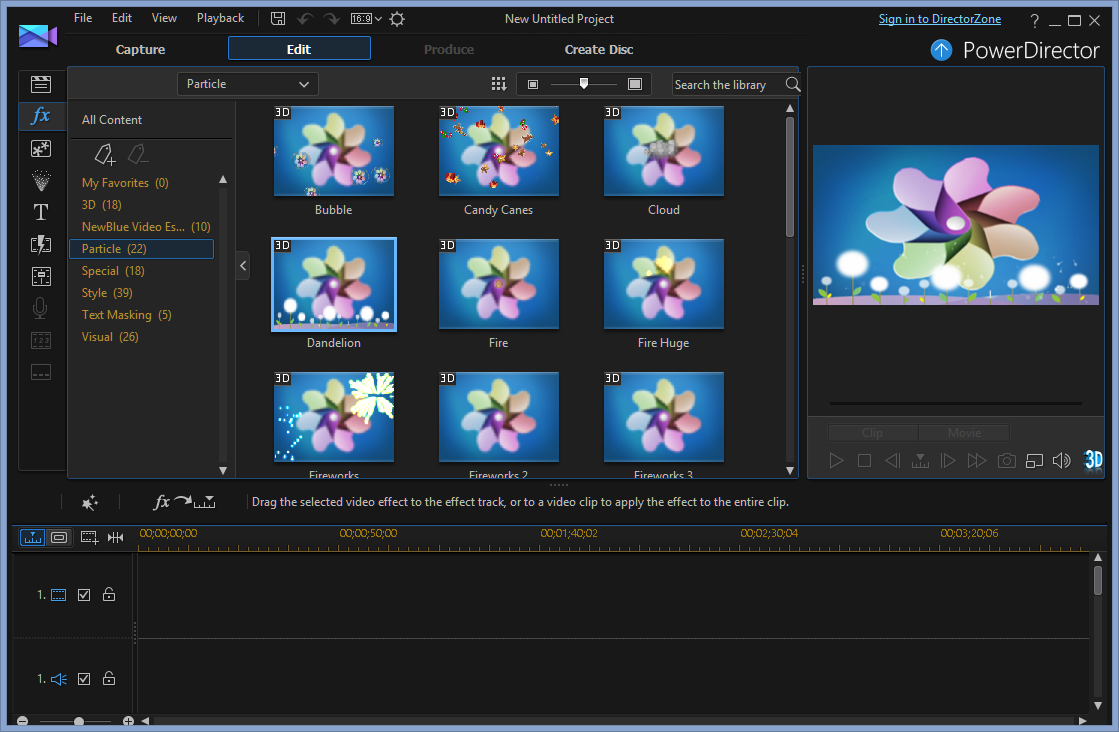

- Cyberlink powerdirector 13 ultra how to#
- Cyberlink powerdirector 13 ultra manual#
- Cyberlink powerdirector 13 ultra series#
There’s a smart device version of PhotoDirector 13, and it’s actually really good. PhotoDirector 13: Compatibility and plugins
Cyberlink powerdirector 13 ultra how to#

The final couple of areas (we did say this was a feature-filled app!) are printing and library organization. Not top of our list of features, but we like that there is a separate area for it. Being able to create informative slideshows is good, and there are various transition effects, text options, and the ability to add music. It’s great if you’re looking to combine PhotoDirector with PowerDirector, but less useful for astro work. The last creative area is the Create workspace this is where you can make slideshows, gifs, and motion stills like title cards. Layers can be individually adjusted, as you'd expect (Image credit: Andy Hartup) There are some good object selection and area selection tools here, and we appreciate the ability to quickly adjust every layer without leaving the workspace, but it still feels light.
Cyberlink powerdirector 13 ultra manual#
You’re really here to manage and adjust layers, and you don’t get the same level of manual artistic effects as more specialized apps like Photoshop. While most other features are covered in the Guided and Adjustment workspaces, in this area PhotoDirector 13 feels a little light. Once you’re done adjusting your photo, this is where you tackle more substantial edits. You can merge the image manually, using (up to 100) layers and light/color corrections in the Edit workspace, but it’s a little trickier to do and even then this won’t be enough for larger-scale star trail shots. Many of the best astro images can combine 10-20 (or more) photos and star trail images can be 100+, so this feels like an issue with PD13’s suitability. Now, here’s where some astrophotographers may balk at PhotoDirector 13 - you only get a maximum of five images to automatically merge here, which can create workflow problems if you’re trying to combine a large number of night sky images. The guided area will also help with things like HDR and panorama merges too. We were impressed with the control this app gives you over bokeh effects. What doesn’t really impress as much are the sparkle and light hit effects - they lack subtlety, and we just couldn’t find a way to make images better-looking when they were applied. What we love is the ability to freeze any part of the image (by using a brush tool), so you can animate very specific areas. Drawing an arrow onto the image dictates the direction of motion, and there’s a slider for speed. In the Guided area you’ll also find photo animation effects, and they’re surprisingly simple to use. You can even brush in areas of focus or bokeh to really nail the detail of the image you’re trying to craft. We played around with the tool to create a very specific portion of an image sharp-focus, while giving the rest a super-soft focus. Also new to PD13 is the Bokeh edit tool, which is extremely detailed. We love the light ray effects, but would advise you to use them sparingly as it’s easy to over-edit photos with some of these tools. One of the major issues with sky replacement is that it can be hard to get the lighting levels to feel natural, and you’d usually do that with a layer mask, but here it’s all built into the same tool. What we really appreciate is the ability to adjust not only the sky, but also the lighting on the foreground/land too. The accuracy of the blend between ‘new sky’ and foreground is very good, and the process is achieved in less than a second. The AI-driven sky replacement is new for PhotoDirector 13, and it’s extremely powerful.
Cyberlink powerdirector 13 ultra series#
There are a series of drop-down menus where you can do things like create animation effects, dispersions, light rays, and sky replacement. Next is the Guided area, and it’s there that all the ‘bells and whistles’ live.


 0 kommentar(er)
0 kommentar(er)
